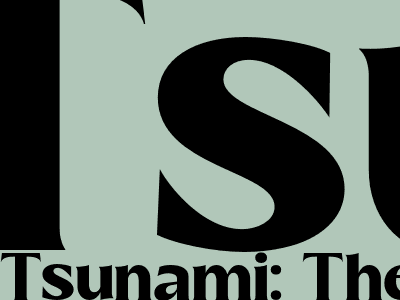
Tsunami: The Wave That Shook The World
The Devastating Force of Nature
A Tsunami is a series of ocean waves generated by sudden disturbances that displace a large volume of water, such as earthquakes, volcanic eruptions, or underwater landslides. Characterised by their long wavelength and immense speed, tsunamis can travel across vast distances, accumulating energy as they approach land, resulting in catastrophic destruction upon making landfall. Notably, tsunamis are distinct from normal ocean waves or storm surges, which are caused by wind. Unlike wind-driven waves, tsunamis penetrate far inland, causing widespread devastation to coastal communities.Historical Devastation
Tsunamis have ravaged coastal regions throughout history, leaving behind a trail of destruction and loss. In 2004, the Indian Ocean Tsunami, triggered by a massive earthquake off the coast of Sumatra, claimed the lives of over 230,000 people in fourteen countries. The 2011 Tohoku Tsunami, caused by a magnitude 9.0 earthquake off the coast of Japan, resulted in over 18,000 fatalities and extensive damage to the Fukushima Daiichi nuclear power plant.
The impact of tsunamis extends beyond human life. Infrastructure, such as buildings, roads, and bridges, is often severely damaged or destroyed. Economic losses can be staggering, as coastal communities rely heavily on tourism and fishing industries.Causes and Characteristics
Tsunamis can be generated by various underwater disturbances, including:Warning Systems and Mitigation Measures
To mitigate the devastating effects of tsunamis, early warning systems have been developed in various regions around the world. These systems monitor seismic activity and sea-level changes, providing valuable time for coastal communities to evacuate and prepare for an impending tsunami.
In addition to warning systems, structural measures can be implemented to reduce the impact of tsunamis. Seawalls, breakwaters, and other coastal defences can help protect vulnerable areas from the force of tsunami waves.Conclusion
Tsunamis are a formidable force of nature, capable of causing widespread devastation and loss of life. Understanding the causes, characteristics, and potential impacts of tsunamis is crucial for mitigating their effects and protecting coastal communities.
Early warning systems, combined with structural measures and community preparedness, play a vital role in reducing the risks associated with tsunamis. By investing in these measures, we can strengthen coastal resilience and save lives.